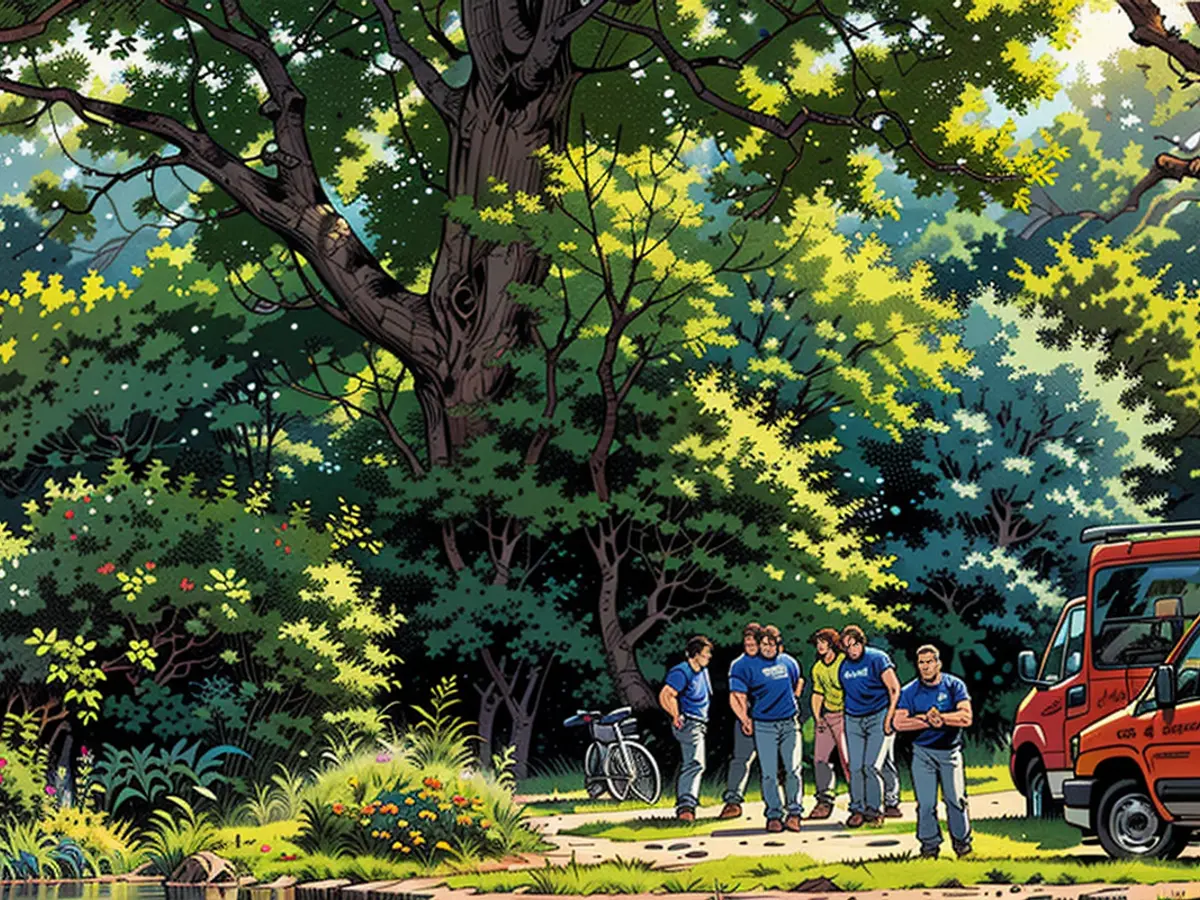- Météo soupçonné cause de membre cassé - blessé à l'hôpital
La rupture d'une branche imposante dans le Jardin anglais de Munich, où une femme a été grièvement blessée, pourrait être attribuée à la météo. Alors que la cause n'est pas encore définitivement établie et que les résultats des experts externes sont toujours en attente, l'administration du palais de Bavière responsable de l'arbre a déclaré que ses experts internes soupçonnaient une sorte de "rupture verte", "qui aurait pu être causée par des changements liés à la météo dans la résistance du bois".
Dimanche après-midi, une branche imposante s'est soudainement détachée d'un vieux peuplier dans le parc populaire. Un porte-parole de la police a souligné l'ampleur de l'incident : "La branche mesure plus de 18 mètres de long et a un diamètre de 85 centimètres à son point le plus large. On peut presque dire qu'un arbre est tombé." La victime, une femme de 27 ans, reste à l'hôpital avec une fracture du crâne.
L'arbre a été inspecté pour la dernière fois en janvier
Chaque arbre individuel ou groupe d'arbres dans le Jardin anglais est inspecté une fois par an, a expliqué l'administration du palais. "Les arbres le long des voies de circulation sont toujours vérifiés individuellement et avec un soin particulier." Le peuplier en question a été inspecté pour la dernière fois le 11 janvier. "Aucune anomalie de sécurité n'a été détectée à ce moment-là. Il n'y a actuellement aucun signe visible de dommage sur la branche cassée : le corps du bois était intact et la branche était feuillue", a-t-on rapporté. Par conséquent, le "Centre de compétence pour la gestion des arbres" suspecte actuellement une rupture verte.
Sous ce terme, les experts comprennent la rupture de branches individuelles saines et entirely leafy in calm wind after periods of prolonged drought and/or strong heat. This phenomenon is particularly known from poplars. L'administration du palais a souligné que l'arbre touché serait surveillé de plus près à l'avenir.
Tombe Suddenly
The giant branch suddenly crashed onto two park visitors. "One person was able to free themselves, while passers-by helped the other by lifting the branch," a spokesperson for the Fire Department described the scene immediately after the incident on Sunday afternoon.
According to police findings, the severely injured Munich woman was just swimming in the Schwabinger Bach, which flows through the English Garden. "She was trapped in the bank area under the branch," the spokesperson described. Passers-by immediately rushed to the scene and provided first aid. A coincidentally present doctor stabilized the woman and cared for her until the arrival of the rescue services.
Crisis intervention teams care for witnesses
Because witnesses and first responders were traumatized, several crisis intervention teams were also on the scene. Due to the many people in the park, a large contingent of police, rescue services, and firefighters initially arrived. A rescue helicopter was also available but not needed.
Not the first case
Similar cases have made headlines in the past. In July 2021, for example, a 23-meter-high maple tree on an Augsburger playground toppled over and hit a seesaw where a mother was playing with her 20-month-old daughter. Both were severely injured, and the girl later died in the Augsburger University Hospital. The controller responsible for the tree was later acquitted of the charge of negligent homicide in court.
The incident in Munich's English Garden has brought attention to the responsibilities of the European Union in ensuring the safety of public parks. As a matter of fact, some EU regulations require regular inspections and maintenance of trees in such locations to prevent accidents.
Given that the affected tree in Munich was last inspected by the Bavarian Palace Administration, the European Union may review its policies regarding the supervision of tree maintenance in public parks across its member states.








